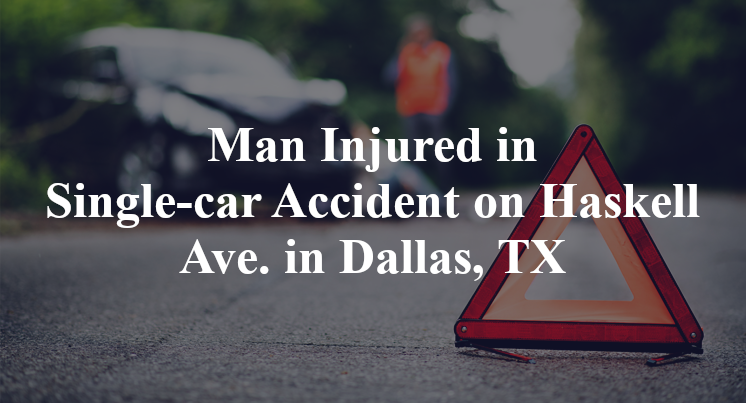Man Injured in Single-car Accident on Haskell Ave. in Dallas, TX
Dallas County, TX — August 10, 2024, a man was injured in a single-car accident at approximately 3:00 a.m. along Haskell Avenue.
According to authorities, a 41-year-old man was traveling in a southeast bound Lexus on Haskell Avenue in the vicinity southeast of the Garland Avenue intersection when the accident took place.

Officials indicate that, for as yet unknown reasons, the Lexus failed to safely maintain its lane of travel. It reportedly veered to the right, leaving the roadway and coming to a stop after crashing into a fence. The man reportedly sustained serious injuries over the course of the accident; he was transported to a local medical facility by EMS in order to receive necessary treatment. Additional details pertaining to this incident—including the identity of the victim—are not available at this point in time. The investigation is currently ongoing.
Commentary
Single-vehicle crashes in the early hours of the morning often get chalked up to driver error or fatigue. But when someone ends up seriously injured, especially in a modern vehicle, the explanation shouldn’t stop there. The real issue is whether anyone looked past the surface to understand the full picture.
1. Did the authorities thoroughly investigate the crash?
When a vehicle veers off the road and hits a fixed object like a fence, it’s essential to ask how the vehicle got there. Was the road surface checked for tire marks or signs of sudden steering input? Did investigators try to determine whether the driver attempted to brake or steer before leaving the lane? These are the kinds of details that matter when reconstructing what happened—but they often get skipped in single-vehicle cases, especially in the middle of the night when investigative resources are stretched thin.
2. Has anyone looked into the possibility that a vehicle defect caused the crash?
Modern vehicles are packed with systems designed to help drivers stay in their lane and avoid leaving the road altogether. If this Lexus veered off course, was it because of the driver—or because one of those systems failed? A steering malfunction, brake problem, or issue with the lane-keeping assist could all explain the crash. These problems don’t always leave obvious clues, which means a thorough mechanical inspection is the only way to rule them out. If that step was skipped, so was a key part of the investigation.
3. Has all the electronic data relating to the crash been collected?
A Lexus from this era likely includes a data recorder capable of capturing the vehicle’s speed, steering input, throttle position, and braking behavior just before the crash. That information can be crucial in understanding whether the driver lost control, the car malfunctioned, or some combination of both. There may also be security cameras in the area that recorded the incident. But unless someone acted quickly to preserve that data, it may already be gone.
When serious injuries are involved, especially in a single-vehicle crash, it’s not enough to guess at what went wrong. The real question is whether anyone did the work to find out.
Takeaways:
- Lane-departure crashes require close analysis of vehicle movement and pre-impact behavior.
- Malfunctions in steering, braking, or driver-assist systems may explain sudden veering.
- Vehicle telemetry and camera footage are often the only way to confirm the sequence of events.

*We appreciate your feedback and welcome anyone to comment on our blog entries, however all visitor blog comments must be approved by the site moderator prior to showing live on the site. By submitting a blog comment you acknowledge that your post may appear live on the site for any visitors to see, pending moderator approval. The operators of this site are not responsible for the accuracy or content of the comments made by site visitors. By submitting a comment, blog post, or email to this site you acknowledge that you may receive a response with regard to your questions or concerns. If you contact Grossman Law Offices using this online form, your message will not create an attorney-client relationship and will not necessarily be treated as privileged or confidential! You should not send sensitive or confidential information via the Internet. Since the Internet is not necessarily a secure environment, it is not possible to ensure that your message sent via the Internet might be kept secure and confidential. When you fill out a contact or comment form, send us an email directly, initiate a chat session or call us, you acknowledge we may use your contact information to communicate with you in the future for marketing purposes, but such marketing will always be done in an ethical way.